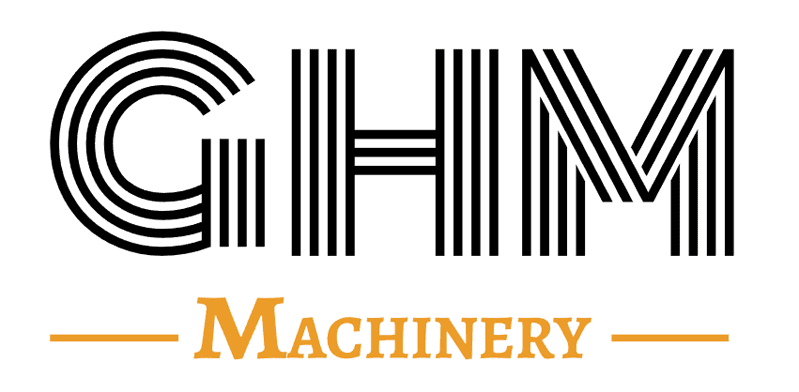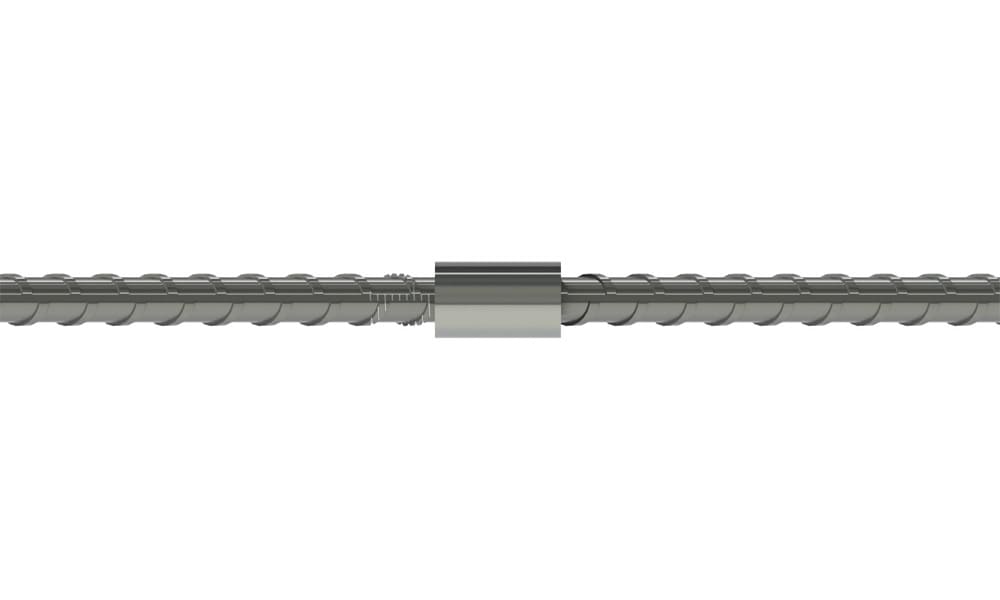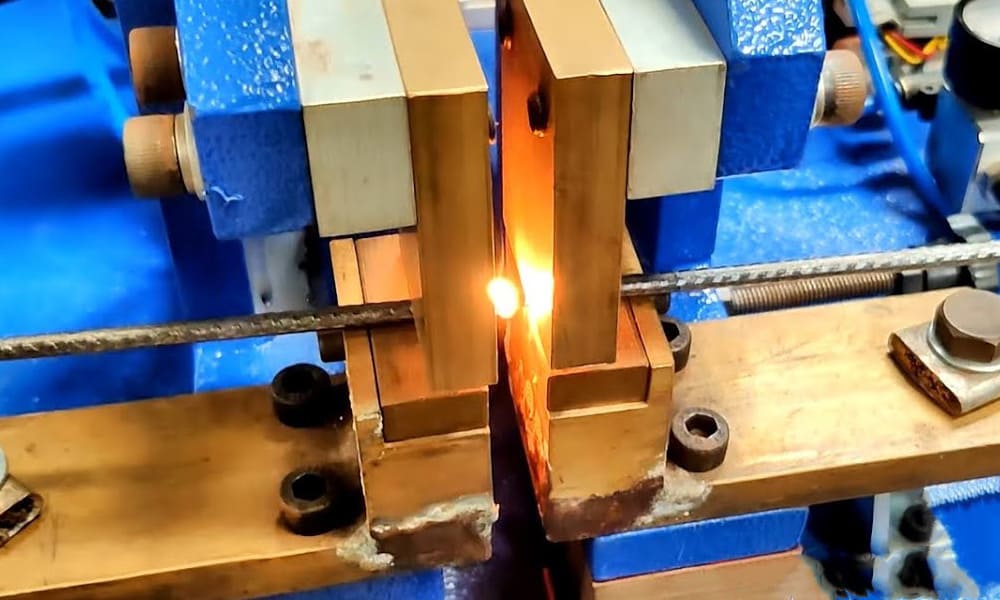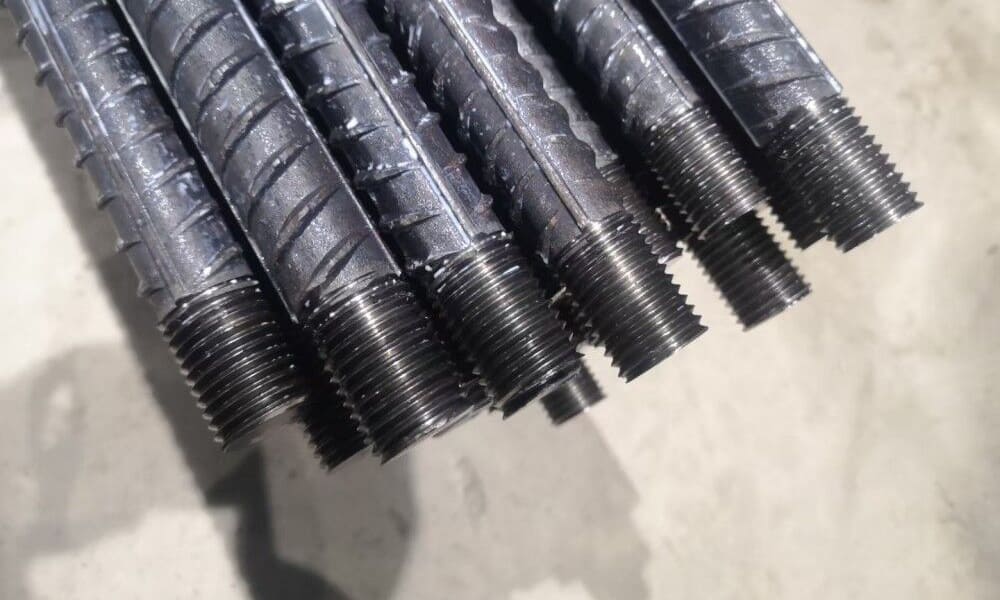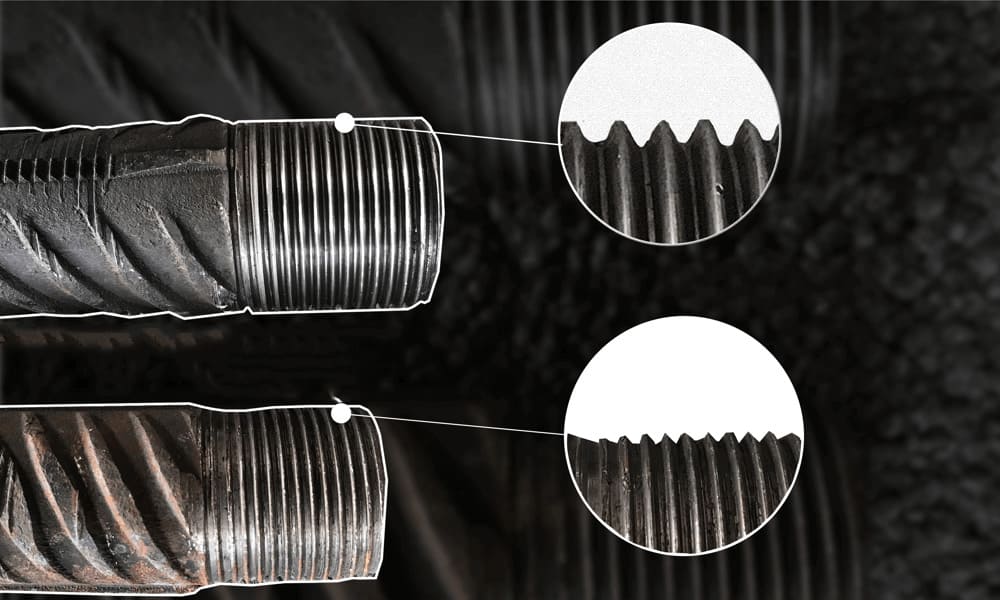Reinforcing Bar Connection Basic Overview
For this project, the following specifications for steel bars are required:
- Beam Steel Bars: Use steel bars with a diameter of ≥16mm, connected with straight threaded sleeves.
- Column Steel Bars (including concealed columns): Use steel bars with a diameter of ≥16mm, connected with straight threaded sleeves.
- Foundation Floor Steel Bars: Also connected with straight threaded sleeves.
Reinforcing Bar Connection Construction Preparation
1. Labor Organization:
- Team Setup: Form two steel bar threading teams on-site based on workload and project timeline. Each team should consist of 3-4 workers and be equipped with a steel bar rib stripping and rolling machine.
- Training: Ensure all operators undergo professional training before starting work.
- Safety Education: Workers must complete level three safety education and pass a physical examination before beginning tasks.
2. Mechanical Preparation:
- Main Tools Required:
- Straight roller straight thread threading machine
- Stop ring gauge
- Pass ring gauge
- Thread head clamp
- Stop plug gauge
- Pass plug gauge
- Working wrench
Material Requirements
1. Rebar:
- Grade and Diameter: Steel bars must meet design requirements and national standards:
- “Hot-rolled ribbed steel bars for reinforced concrete” (GB1499.2-2007)
- “Waste heat-treated steel bars for reinforced concrete” (GB13014-91)
- Certification: Bars should come with a factory quality certificate and an on-site retest report.
- Cutting: Ends must be cut straight with a toothless saw, not with a steel bar cutting machine. Remove any rust, oil, mortar, and burrs that might interfere with insertion and connection.
2. Connecting Sleeves:
- Material: Sleeves should be made of No. 45 high-quality carbon structural steel or equivalent, with a production batch number and product certificate from the manufacturer.
- Specifications:
Rebar Diameter Thread Diameter Sleeve Outer Diameter Sleeve Length 16 M16.5×2 25 45 18 M19×2.5 29 55 20 M21×2.5 31 60 22 M23×2.5 33 65 25 M26×3 39 70 28 M29×3 44 80 - Storage: Sleeves should be packed and stored by category to prevent mixing or corrosion.
Technical Preparation
1. Training:
- Ensure construction personnel understand specifications and industry standards for straight threaded steel bar connections.
- Prepare construction specifications, procedures, and standard atlases.
- Conduct a comprehensive technical briefing for all operators before construction begins.
Construction Technology
1. Process Flow:
- Steps: Reinforcement bar blanking → Reinforcement bar wire wrapping → Joint single specimen test → Reinforcement bar connection → Quality inspection
2. Cutting Steel Bars:
- Requirements: Reserve 30mm at the end for cutting with a toothless saw. Ensure the end face is perpendicular and flat, free of distortion. Do not use steel bar cutting machines or gas cutting methods.
3. Reinforcement Wire Covering:
- Lubrication: Use water-soluble cutting cooling lubricant. In temperatures below zero, add 15-20% sodium nitrite. Avoid engine oil.
- Thread Specifications: Match the tooth shape and pitch of the steel wire head to the connecting sleeve. The bald part in the thread button should not exceed half the circumference of a button.
- Processing Dimensions:
Thread Size Thread Length Complete Thread Turns M16.5×2 22.5mm ≥8 M19×2.5 27.5mm ≥7 M21×2.5 30mm ≥8 M23×2.5 32.5mm ≥9 M26×3 35mm ≥9 M29×3 40mm ≥10 - Quality Control: Check each thread head with pass and stop gauges every 10 pieces. Randomly sample and inspect 10% of the produced thread heads. If the pass rate is below 95%, double the sampling rate. Re-inspect any failing pieces.
4. Rebar Connection:
- Specifications: Ensure connecting sleeve and steel bar specifications match. Check threads for cleanliness and intactness before connecting.
- Tools: Use a torque wrench or pipe wrench for tightening. Ensure the torque values are accurate within ±5%.
Rebar Diameter (mm) Torque (N·m) ≤16 100 18–20 200 22–25 260 28–32 320 36–40 360 - Marking: Mark tightened joints and ensure the exposed thread length on one side does not exceed 2P (where P is the thread pitch).
- Connection Method: Connect horizontal steel bars from one end to the other, not from both ends or middle.
5. Quality Check:
- Joints Testing: Inspect each batch for process compliance:
- Test each specification with at least 3 joints.
- Ensure tensile strength meets or exceeds standards.
- On-site Inspection:
- Tightening Torque: Sample 15% of joints; inspect every 100 joints for foundation, wall, and plate components. If less than 100, sample 3 joints.
- Tensile Strength: Test 3 specimens per batch, with a requirement that strength must meet or exceed Grade II standards. If one specimen fails, test six more pieces.
By following these guidelines, you ensure the effective and safe execution of Reinforcing Bar Connection, maintaining high standards of quality and performance in construction.
